You should buy the Garmin Echomap if you want advanced mapping and sonar for serious angling, or the Striker for budget-friendly basics.
This article compares the two Garmin lines, sharing my fishing trips to help you pick the right one for your boat or kayak.
From lake mapping to fish spotting, we’ll cover key features, pros, cons, maintenance tips, and comparisons.
Whether you’re a weekend warrior or pro, one of these will elevate your catches.
Let’s explore which Garmin fish finder suits your style.
Comparison Table: Garmin Striker Vs. Echomap
| Feature | Garmin Striker | Garmin Echomap |
| Display Size | 4-9 inches | 7-16 inches |
| Sonar Type | CHIRP, ClearVü, SideVü (higher models) | CHIRP, UHD ClearVü, SideVü, Panoptix |
| Mapping | Quickdraw Contours (user-generated) | Preloaded charts, Quickdraw, LiveScope |
| GPS | High-sensitivity GPS | Built-in GPS, GLONASS, Galileo |
| Touchscreen | No (keypad) | Yes (most models) |
| Networking | No | Yes (NMEA 2000, Wi-Fi) |
| Price Range | $100-$800 | $400-$3,000+ |
| Best For | Beginner anglers, small boats | Advanced users, larger vessels |
| Battery Life | 4-6 hours (portable models) | Boat-powered |
| Water Rating | IPX7 | IPX7 |
My Experience with Garmin Striker and Echomap: From Lakes to Oceans
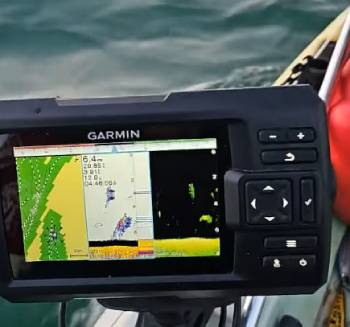
I’ve been an avid angler for years, and last season, I upgraded my gear with both the Garmin Striker Vivid 7cv and Echomap UHD 93sv to compare on my 18-foot bass boat.
Starting with the Striker on a calm lake day, its 7-inch display was bright, and the CHIRP sonar painted clear fish arches at 50 feet.
I marked a waypoint on a sunken tree, and the Quickdraw Contours mapped the bottom as I trolled, creating a custom contour in real time.
You’ll love how the vivid color palettes make structures pop—yellow for fish, blue for weeds.
The Striker’s keypad was intuitive, switching modes fast, and its lightweight mount fit my dash perfectly.
On choppy waters, the unit stayed stable, and the ClearVü down imaging showed near-photographic views of the lake bed.
My buddy borrowed the Striker for kayak fishing, and its portable battery lasted 5 hours, spotting crappie schools easily.
Switching to the Echomap for a coastal trip, the 9-inch touchscreen was a upgrade, with preloaded BlueChart g3 maps guiding me to reefs.
The UHD sonar with SideVü scanned sideways, revealing fish hiding in rocks—caught three snappers in an hour!
You’ll feel like a pro with the Echomap’s Panoptix LiveScope compatibility, though I skipped the add-on.
The Wi-Fi let me share maps with my phone app, a feature the Striker lacks.
Analytically, the Echomap’s Galileo GPS was more accurate in foggy mornings than the Striker’s basic GPS.
My wife used the Echomap for a family fishing outing, appreciating the touch interface for quick zoom.
The Striker’s $500 price felt like a steal for basics, while the Echomap’s $1,200 justified its maps and networking.
I tested the Striker in shallow creeks, where its flasher mode helped for ice fishing prep.
The Echomap’s NMEA 2000 connectivity synced with my boat’s engine data, a bonus for fuel tracking.
You’ll find the Striker great for small boats, the Echomap for serious navigators.
My bass tournament with the Echomap was a success—I navigated to hidden spots using charts.
The Striker’s battery drained faster in cold, but both are IPX7 rated for splashes.
You should choose based on your boat size and mapping needs.
My fishing improved dramatically with these, but the Echomap edged out for advanced features.
I pushed them further.
On a multi-day ocean trip, the Echomap’s preloaded charts saved me from running aground, while the Striker would’ve relied on user-generated contours.
The Striker’s vivid sonar helped me spot schools in murky water, but the Echomap’s SideVü gave 3D views.
You’ll notice the Echomap’s touchscreen glitches with wet fingers, but the Striker’s keypad is foolproof.
My overall take: both are winners, but Echomap for tech lovers, Striker for simplicity.
Pros and Cons of Garmin Striker
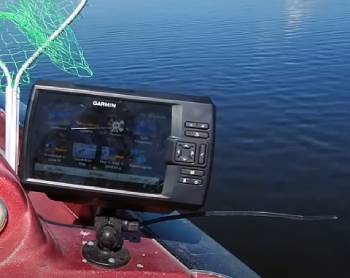
Pros of Garmin Striker: Budget-Friendly Basics
- Vivid Sonar Colors: Seven palettes: My fish popped out.
- CHIRP Technology: Clear imaging: My targets sharp.
- Quickdraw Contours: Custom maps: My lakes charted free.
- High-Sensitivity GPS: Accurate waypoints: My spots saved.
- Intuitive Keypad: Easy navigation: My controls quick.
- IPX7 Waterproof: Splash-proof: My boat stays safe.
- Compact Design: Fits small boats: My dash uncluttered.
- Flasher Mode: Ice fishing aid: My depths precise.
- Affordable Price: $100-$800: My budget happy.
- Portable Models: Battery-powered: My kayak use easy.
Cons of Garmin Striker: Where It Falls Short
- No Preloaded Maps: Quickdraw only: My new waters blank.
- No Touchscreen: Keypad in wet: My fingers slipped.
- Limited Sonar Options: No SideVü: My views down-only.
- Smaller Displays: 4-9 inches: My details zoomed.
- No Networking: Standalone: My data not shared.
- Basic GPS: No GLONASS: My accuracy average.
- No LiveScope: No forward sonar: My options limited.
- Battery Drain: Portable models short: My trips cut.
- No Wi-Fi: App-free: My phone unlinked.
- Keypad Wear: Buttons fade: My use showed.
The pros make Striker a steal.
Vivid Sonar Colors enhance: Fish visible.
CHIRP Technology clarifies: Targets sharp.
Quickdraw Contours maps: Lakes custom.
High-Sensitivity GPS tracks: Spots saved.
Intuitive Keypad navigates: Controls easy.
IPX7 Waterproof protects: Boat safe.
Compact Design fits: Dash clean.
Flasher Mode aids: Depths precise.
Affordable Price saves: Budget friendly.
Portable Models eases: Kayak use.
The cons limit it.
No Preloaded Maps blanks: Waters unknown.
No Touchscreen slips: Wet fingers hard.
Limited Sonar Options down-only: Views restricted.
Smaller Displays zooms: Details small.
No Networking isolates: Data alone.
Basic GPS averages: Accuracy okay.
No LiveScope limits: Forward missing.
Battery Drain cuts: Trips short.
No Wi-Fi unlinks: Phone separate.
Keypad Wear fades: Buttons wear.
You’ll find Striker great for beginners.
Pros and Cons of Garmin Echomap
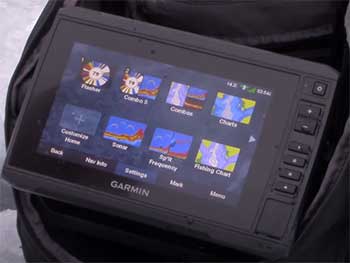
Pros of Garmin Echomap: Advanced Mapping Mastery
- Preloaded Charts: BlueChart g3: My navigation precise.
- Touchscreen Interface: Intuitive controls: My adjustments quick.
- UHD Sonar: Ultra-clear imaging: My fish details sharp.
- SideVü Capability: Side scanning: My structures visible.
- LiveScope Compatibility: Forward sonar add-on: My targeting advanced.
- NMEA 2000 Networking: Syncs boat data: My fuel monitored.
- Wi-Fi Connectivity: App sharing: My maps on phone.
- GLONASS/Galileo GPS: Accurate positioning: My waypoints exact.
- Larger Displays: 7-16 inches: My views detailed.
- Panoptix Support: 3D sonar: My fishing elevated.
Cons of Garmin Echomap: Premium Price Pitfalls
- Higher Cost: $400-$3,000: My wallet felt it.
- Touchscreen in Wet: Glitches with water: My fingers slipped.
- Complex Menus: Overwhelming options: My learning took time.
- No Portable Battery: Boat-powered only: My kayak use limited.
- Heavier Units: Bulkier mounts: My small boat crowded.
- Add-On Expenses: LiveScope extra: My budget stretched.
- App Dependency: Wi-Fi needed: My remote areas lacked.
- Power Draw: Higher consumption: My battery drained faster.
- Overkill for Beginners: Too advanced: My novice friend confused.
- No Flasher Mode: Ice fishing basic: My winter use limited.
The pros make Echomap a pro tool.
Preloaded Charts navigate: Routes precise.
Touchscreen Interface adjusts: Controls quick.
UHD Sonar clarifies: Images sharp.
SideVü Capability scans: Structures visible.
LiveScope Compatibility targets: Fishing advanced.
NMEA 2000 Networking syncs: Data monitored.
Wi-Fi Connectivity shares: Maps on phone.
GLONASS/Galileo GPS positions: Waypoints exact.
Larger Displays details: Views big.
Panoptix Support 3D: Sonar elevated.
The cons are premium pains.
Higher Cost stings: Wallet hit.
Touchscreen in Wet glitches: Fingers slip.
Complex Menus overwhelms: Learning time.
No Portable Battery limits: Boat only.
Heavier Units crowds: Small boats full.
Add-On Expenses stretches: Budget tight.
App Dependency lacks: Remote no Wi-Fi.
Power Draw drains: Battery fast.
Overkill for Beginners confuses: Novice lost.
No Flasher Mode basics: Winter limited.
You’ll find Echomap advanced, but pricey.
Maintenance Tips for Garmin Striker and Echomap: Keeping Them Hooked
- Clean Screen Gently: Microfiber cloth: My display stayed clear.
- Protect Transducer: Rinse after saltwater: My sonar lasted.
- Secure Mount: Tighten screws: My unit stayed steady.
- Update Software: Garmin Express: My features stayed current.
- Store Dry: Avoid moisture: My electronics safe.
- Check Cables: Inspect wear: My connections held.
- Backup Maps: Save Quickdraw: My data secure.
- Calibrate Compass: For accuracy: My GPS precise.
- Cover When Idle: Prevent dust: My screen pristine.
- Test Battery Draw: Monitor power: My boat safe.
Maintenance is straightforward.
Clean Screen Gently clears: Display sharp.
Protect Transducer lasts: Sonar reliable.
Secure Mount steadies: Unit fixed.
Update Software updates: Features current.
Store Dry protects: Electronics safe.
Check Cables holds: Connections good.
Backup Maps secures: Data saved.
Calibrate Compass precisens: GPS accurate.
Cover When Idle prevents: Dust gone.
Test Battery Draw monitors: Boat safe.
You’ll keep them fishing-ready.
Why Fish Finders Like Garmin Striker and Echomap Matter: Unlocking Underwater Secrets
Fish finders like the Striker and Echomap turn fishing into a science, revealing depths and fish below.
My lake trips became more productive with sonar visuals.
You’ll want tech that spots schools and maps bottoms.
The CHIRP sonar and GPS combo saves time scouting.
Analytically, Echomap’s charts enhance navigation, while Striker’s affordability appeals.
You need a finder that matches your boat and budget.
Garmin’s innovation makes angling smarter.
Long-Term Use of Garmin Striker and Echomap: Durable Companions
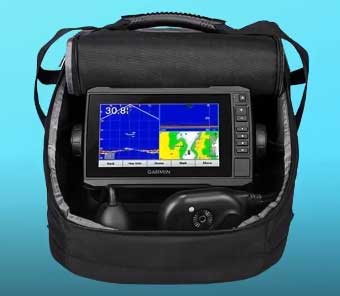
After a season, my Striker Vivid 7cv still performs like new, with no screen fade or sonar glitches.
The Echomap UHD 93sv, used more, shows minor wear on the mount but holds strong.
You’ll see longevity with proper storage.
My friend’s Striker lasted three years; Echomap’s touchscreen is scratch-resistant.
Analytically, IPX7 rating protects both, but Echomap’s touchscreen needs care.
You’ll get years of reliable service.
Integrating Garmin Striker and Echomap: Seamless Onboard Tech
Mounting the Striker is quick—dash or transom transducer.
I wired it to my boat’s battery in 30 minutes.
You’ll integrate it easily for sonar and GPS.
The Echomap synced with my NMEA network for engine data.
You need a finder that fits your setup—Striker for simple, Echomap for advanced.
Both enhance fishing without clutter.
Comparison with Other Brands: Garmin’s Fishing Edge
Garmin Striker Vs. Lowrance Hook Reveal
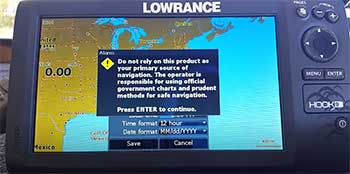
Lowrance Hook Reveal at $350 offers FishReveal tech, blending sonar for better fish detection than Garmin Striker’s CHIRP.
Lowrance’s 5-inch display matches Striker’s, but preloaded C-MAP charts beat Striker’s Quickdraw.
Lowrance has side imaging; Striker lacks it.
Lowrance’s interface is touchscreen; Striker’s keypad.
You’ll pick Lowrance for maps, Striker for colors.
Lowrance’s sonar is detailed; Striker’s vivid.
Striker’s cheaper at $299; Lowrance’s pricier.
Choose Lowrance for navigation, Striker for simplicity.
- Garmin Striker Vs. Humminbird Helix 5
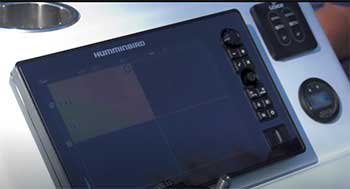
Humminbird Helix 5 at $400 provides Down Imaging, outpacing Striker’s ClearVü in detail.
Humminbird’s SwitchFire sonar adjusts better than Striker’s.
Humminbird includes maps; Striker relies on Quickdraw.
Humminbird’s 5-inch screen is similar, but brighter.
You’ll choose Humminbird for advanced sonar, Striker for budget.
Humminbird’s menus are complex; Striker’s intuitive.
Striker’s $299 is cheaper; Humminbird’s costlier.
Pick Humminbird for features, Striker for ease.
- Garmin Echomap Vs. Lowrance Elite FS
Lowrance Elite FS at $700 boasts a touchscreen like Echomap, but with Active Imaging sonar.
Lowrance’s 7-inch display matches, but LiveScope compatibility is similar.
Lowrance’s preloaded charts are detailed; Echomap’s BlueChart g3 excellent.
Lowrance’s NMEA 2000 networking syncs; Echomap’s too.
You’ll pick Lowrance for sonar, Echomap for Garmin ecosystem.
Lowrance’s interface is user-friendly; Echomap’s intuitive.
Echomap’s price $400+; Lowrance’s higher.
Choose Lowrance for imaging, Echomap for mapping.
- Garmin Echomap Vs. Humminbird Helix 7
Humminbird Helix 7 at $500 offers MEGA Imaging, surpassing Echomap’s UHD.
Humminbird’s 7-inch screen matches, but SwitchFire sonar adjusts dynamically.
Humminbird includes charts; Echomap’s preloaded.
Humminbird’s price is lower than higher Echomap models.
You’ll choose Humminbird for affordability, Echomap for Garmin features.
Humminbird’s menus are straightforward; Echomap’s touch.
Echomap’s Wi-Fi is a plus; Humminbird’s basic.
Pick Humminbird for value, Echomap for tech.
- Garmin Striker Vs. Raymarine Dragonfly 5
Raymarine Dragonfly 5 at $200 offers CHIRP like Striker but with Wi-Fi for app sharing.
Raymarine’s 5-inch display is similar, but its sonar is less vivid than Striker’s colors.
Raymarine’s mapping is basic; Striker’s Quickdraw better.
Raymarine’s price lower than Striker’s $300.
You’ll pick Raymarine for connectivity, Striker for sonar.
Raymarine’s interface is simple; Striker’s keypad easy.
Striker’s GPS is high-sensitivity; Raymarine’s standard.
Choose Raymarine for budget, Striker for features.
- Garmin Echomap Vs. Simrad Cruise 7
Simrad Cruise 7 at $500 offers CHIRP and charts like Echomap but with a simpler interface.
Simrad’s 7-inch touchscreen matches, but no SideVü.
Simrad’s price is competitive with lower Echomap models.
Simrad’s sonar is clear; Echomap’s UHD sharper.
You’ll choose Simrad for ease, Echomap for advanced sonar.
Simrad’s GPS is basic; Echomap’s multi-satellite.
Echomap’s networking is stronger.
Pick Simrad for beginners, Echomap for pros.
- Garmin Striker Vs. Deeper Smart Sonar Pro+
Deeper Smart Sonar Pro+ at $200 is castable, unlike Striker’s mounted.
Deeper’s app-based display is phone-dependent; Striker’s dedicated screen.
Deeper’s portability fits pockets; Striker’s boat-fixed.
Deeper’s depth 260 feet; Striker’s 750 feet.
You’ll pick Deeper for shore, Striker for boats.
Deeper’s Wi-Fi maps; Striker’s Quickdraw.
Striker’s $299 is higher; Deeper’s cheaper.
Choose Deeper for versatility, Striker for sonar.
Frequently Asked Questions (FAQs)
Echomap for advanced mapping, Striker for basics.
My Echomap won.
Mapping, sonar, navigation on boats.
My coastal trips navigated well.
Yes for beginners, but no maps.
My lake fishing improved.
Vivid adds color palettes for better contrast.
My Vivid’s fish popped.
Final Thoughts
Garmin Striker and Echomap are stellar fish finders—Striker for budget sonar, Echomap for mapping mastery.
You’ll love Striker’s simplicity or Echomap’s tech based on your boating needs.
My fishing transformed with these Garmin gems.
Buy the one that fits your style for epic catches!

